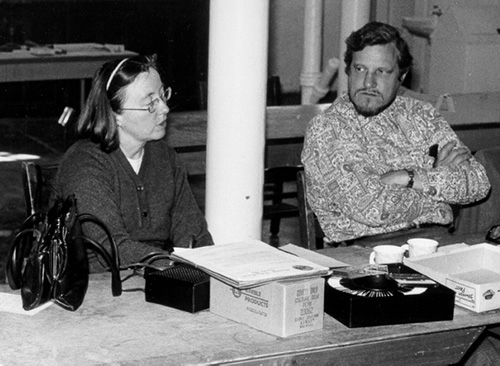INTRODUCTION
The Archeological and Historic Preservation Act (Public Law 86-523, 16 U.S.C. 469-469c-2) first became law in 1960. It became known as the “Moss-Bennett Act” after the important amendment signed into law in 1974 that provided federal funding to mitigate destruction of archeological sites in specific circumstances. The following excerpt (pp. 54–56 of our 1992 special publication, History of the Arkansas Archeological Survey, by Charles R. McGimsey III and Hester A. Davis) details how these events transpired in the words of one of the principal actors, Arkansas’s State Archeologist at that time, Hester A. Davis.
PUBLIC ARCHEOLOGY IN ACTION, 1967-1975
The Survey was created out of the concept of public archeology, although this term was not actually used until the publication of McGimsey's book by that name. The active support given to the creation of the Survey, as narrated in a previous chapter, is the essence of what is now universally known as Public Archeology.
It Took Six Years to Get the Moss-Bennett Act Through Congress


 In June 1974, McGimsey, who was President of the Society for American Archaeology at the time, wrote a proposal to the National Park Service, for funds to hold six "seminars" where small groups of archeologists would tackle some of these problems. The Airlie House Seminars were held in the summer of 1974; PL 93-291 had been signed into law by President Nixon in May so the need for professional guidance was at hand. Although the results of the seminars were not published until 1977 as The Management of Archeological Resources (edited by McGimsey and Davis and distributed by the SAA), drafts had circulated widely in the intervening years, and this standardized guidance had great influence on the course of cultural resources management.
In June 1974, McGimsey, who was President of the Society for American Archaeology at the time, wrote a proposal to the National Park Service, for funds to hold six "seminars" where small groups of archeologists would tackle some of these problems. The Airlie House Seminars were held in the summer of 1974; PL 93-291 had been signed into law by President Nixon in May so the need for professional guidance was at hand. Although the results of the seminars were not published until 1977 as The Management of Archeological Resources (edited by McGimsey and Davis and distributed by the SAA), drafts had circulated widely in the intervening years, and this standardized guidance had great influence on the course of cultural resources management.